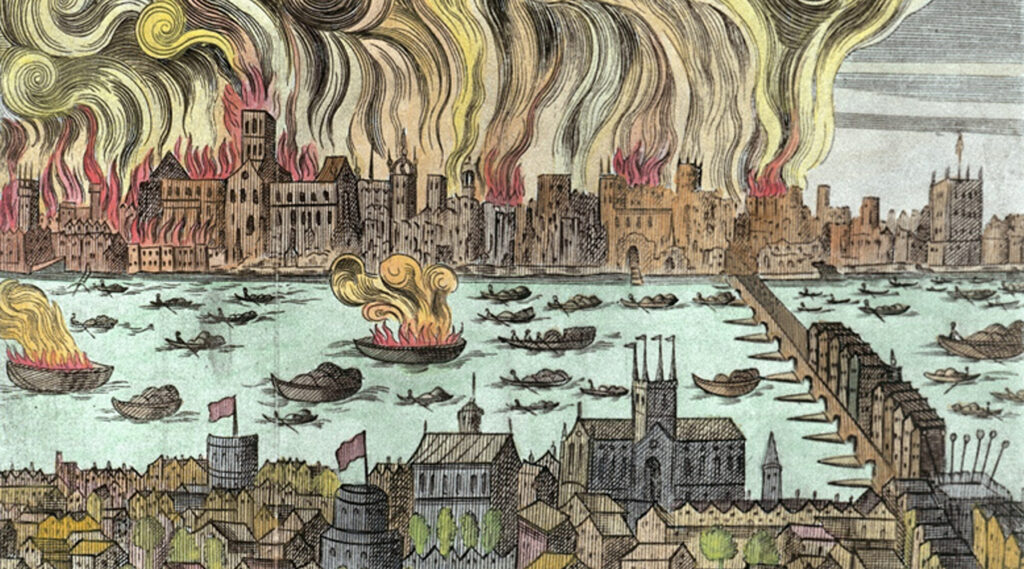It’s taken nearly 360 years to find him, but researchers now believe they have identified the person who first raised the alarm when the Great Fire of London started on the evening of 2nd September 1666.

The Great Fire of London 1666 (woodcut) (later colouration) by English School, 17th century (c) Museum of London
It’s taken this long to work out who would have been the first to see the fire due to confusing reports afterwards, but research undertaken for the museum’s new site in Smithfield has pieced together the clues.
Studying information from letters, pamphlets, legal and guild records, Professor Kate Loveman at the University of Leicester has named Thomas Dagger, a journeyman baker living above Thomas Farriner’s bakery on Pudding Lane as the man who first tried to warn people about the fire.
Farriner’s bakery was the first of 13,200 houses destroyed in the Great Fire.
However, reports have disagreed on who was in the bakery when the fire started. A letter from the MP Sir Edward Harley offers the most detailed account. He wrote that Thomas Farriner’s ‘man’ (meaning his servant or journeyman) was woken after 1am ‘with the choke of the smoke’. Farriner, his daughter and his man then escaped out of an upper window, but his maid died. Other sources make no mention of the unnamed man or maid, but refer to Farriner’s son being present.
The information gained from the records provides the surviving members of the Farriner household. They were Farriner, his adult children Hanna and Thomas, and his ‘man’, who can now be identified for the first time as Thomas Dagger. It was Dagger who reportedly “discovered” the Great Fire and raised the alarm.
The archives at the Bakers’ Company report that Dagger had arrived in London from the village of Norton in Wiltshire after his father died. After an apprenticeship, he had been working at the Farriner’s bakery for two years.
After the fire, he moved to set up his own bakery in nearby Billingsgate, married and had a baby, Frances.
The research will inform galleries at the London Museum in Smithfield, which opens to the public in 2026. The museum’s Great Fire display will be reimagined, putting the stories of real Londoners at the forefront of a newly-designed, interactive space at the new site.
A key aspect of these new teaching resources is materials that show children, women, people of colour, and d/Deaf people at the time of the Great Fire of London. The project aims to give teachers new ways to teach the Great Fire, give learners a sense of place and ownership over their history, and to spark interest in the 17th century.
Kate Loveman, Professor of Early Modern Literature and Culture at the University of Leicester, said: “It was fascinating to find out more about what happened on that famous night. Although most of the evidence about the Farriners is well-known to historians, Thomas Dagger’s role has gone unrecognised. Unlike the Farriners, his name didn’t become associated with the fire at the time. Soon after the disaster, he merges back into the usual records of Restoration life, having children and setting up his own bakery. His is a story about the fire, but also about how Londoners recovered.”
The Reimagining the Restoration project was funded by the Arts and Humanities Research Council.







I look forward to the new display. I am very fond of the old light-up model but it was in a very tight space and no longer as state of the art as it was in my childhood. Hopefully, they will keep it as a ‘museum piece’ in its own right.